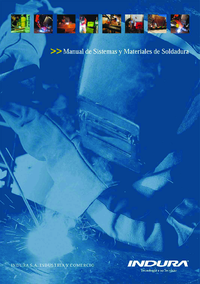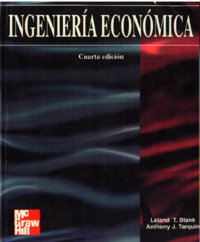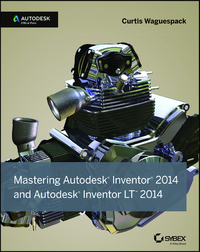Categoría "Ingeniería"
Se han encontrado 24 Coincidencias
Manual de Sistemas y Materiales de Soldadura
94 Visitas | 102 Descargas | 2014-12-16 13:36:38 | raulito
INDURA nace en 1948 para satisfacer las necesidades del sector metalmecánico con una moderna planta de electrodos. Trece años más tarde, entró en operaciones la planta para la producción de oxígeno, acetileno y nitrógeno. A partir de esta sólida base INDURA se abrió al mundo. Este fue el primer pilar de la empresa, que posteriormente se expandió a otros países de la región. INDURA Ecuador se creó en 1979, para entregar productos y servicios en el área metalmecánica, con soldaduras, gases y equipos. Posteriormente, INDURA se estableció en Argentina en 1991. A la fecha está presente en Buenos Aires, Córdoba, Rosario y Tucumán, ofreciendo productos y servicios para las áreas medicinal, metalmecánica y de resonancia magnética nuclear. Desde 1996, INDURA está presente en Perú principalmente en las áreas metalmecánica y minera. El año 2004 comenzó a participar en el área medicinal. Asimismo, mediante un efectivo canal de distribución de soldaduras, INDURA está presente en Estados Unidos, Canadá, México, Colombia, Venezuela y Centroamérica. A esto se suma la apertura hacia el mercado europeo con la instalación de un sistema logístico en Barcelona, España.

ingeniería económica
122 Visitas | 190 Descargas | 2014-12-16 13:57:07 | raulito
Este texto ha sido preparado en una forma fácil de leer para uso en el aprendizaje y enseñanza y como libro de referencia para los cálculos básicos utilizados en un análisis de ingeniería económica. Su uso es más apropiado para un curso universitario de un semestre o un trimestre de duración en análisis de ingeniería económica, análisis de proyectos o análisis de ingeniería de costos. Los estudiantes deben tener por lo menos un nivel de segundo año universitario y preferiblemente un tercero. No es necesario tener estudios previos de calculo para entender el material, pero es útil una comprensión básica de economía y contabilidad (en especial desde un punto de vista de costos). Sin embargo, el enfoque de construcción de bloques empleado en el diseño del texto permite al practicante no familiarizado con los principios de economía utilizar el texto para aprender, entender y aplicar correctamente las técnicas en el proceso de toma de decisiones.

Mastering Autodesk® Inventor® 2014 and Autodesk® Inventor LT™ 2014
115 Visitas | 121 Descargas | 2015-07-16 16:23:29 | efirvida
The Autodesk® Inventor® program was introduced in 1999 as an ambitious 3D parametric modeler based not on the familiar AutoCAD® software programming architecture but instead on a separate foundation that would provide the room needed to grow into the fully featured modeler it is now, over a decade later. Autodesk Inventor 2014 continues the development of Autodesk Inventor with improved modeling, drawing, assembly, and visualization tools. Autodesk has set out to improve this release of Autodesk Inventor by devoting as much time and energy to improving existing tools and features as they have to adding new ones. With this book, the sixth edition of Mastering Autodesk Inventor and Autodesk Inventor LT, I have set out to update the existing pages and add new content and exercises. In these pages, you will f nd detailed information on the specif cs of the tools and the principles of sound parametric design techniques. Some readers will f nd this book works best for them as a desktop reference, whereas others will use it primarily for the step-by-step tutorials. With this in mind, I’ve worked to shape the pages of this book with a mix of reference material, instructional steps, and tips and hints from the real world

Advances in Geophysical and Environmental Mechanics and Mathematics
49 Visitas | 50 Descargas | 2017-02-14 06:09:52 | raulito
Fluid and thermodynamics (FTD) are generally taught at technical universities as separate subjects and this separation can be justified simply by reasons of the assigned time; the elements of each subject can be introduced within a semester of *15 weeks. Most likely, these outer educational boundaries may even have well furthered this separation. Intellectually, the two subjects, however, belong together, especially since for all but ideal fluids the second law of thermodynamics imposes constraint conditions on the parameters of the governing equations (generally partial differential equations) that are then used in the fluid dynamic part of the joint effort to construct solutions to physically motivated initial boundary value problems that teach us important facts of the behavior of the motion of the fluid under certain circumstances.
Contribuir
Usted puede contribuir con Libros UCLV, es importante para nosotros su aporte..
Contribuir